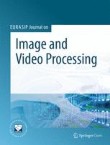Integrating the Projective Transform with Particle Filtering for Visual Tracking
This paper presents the projective particle filter, a Bayesian filtering technique integrating the projective transform, which describes the distortion of vehicle trajectories on the camera plane. The characte...
